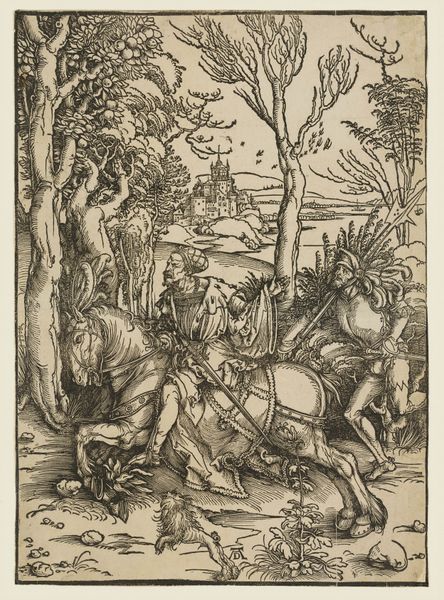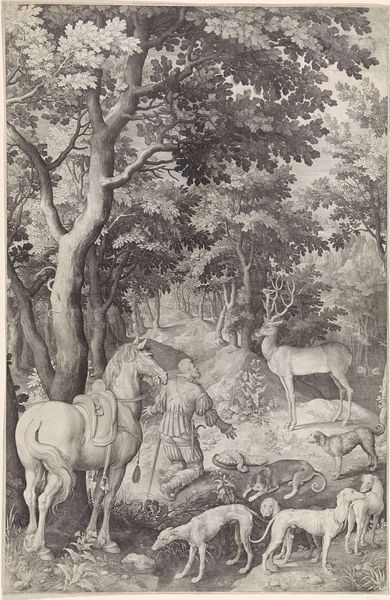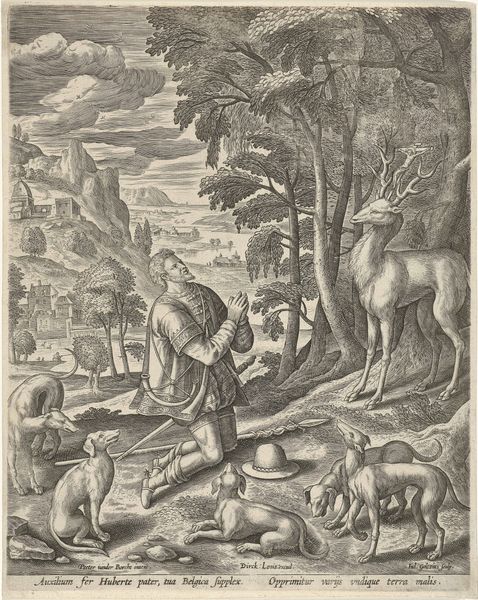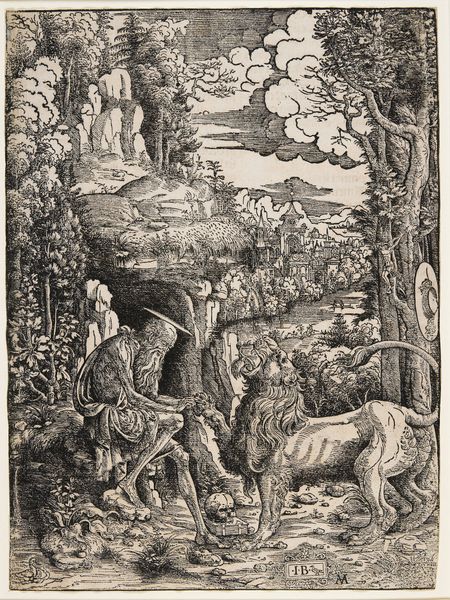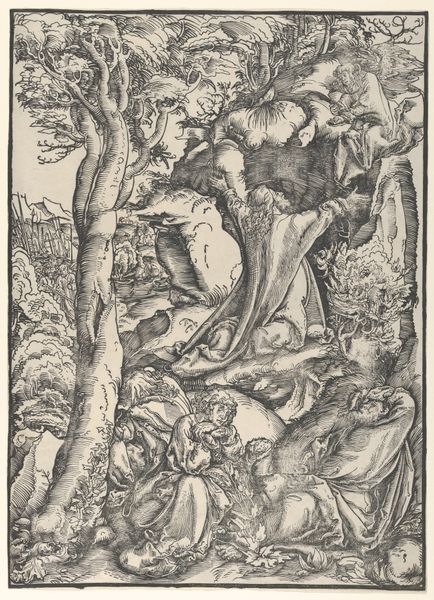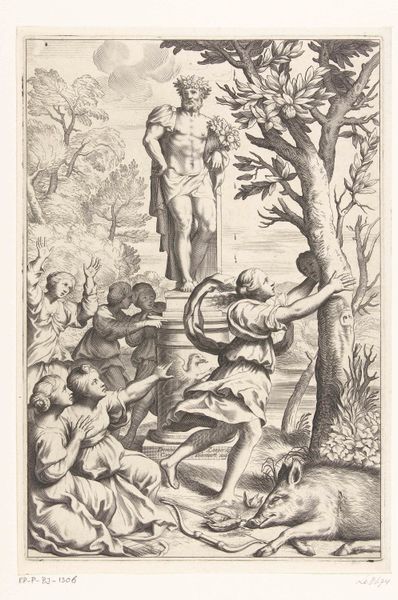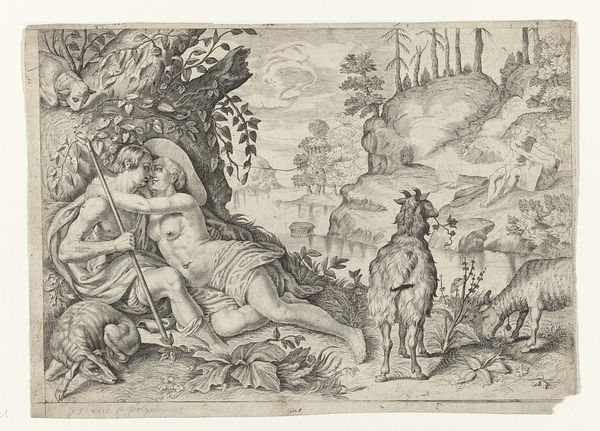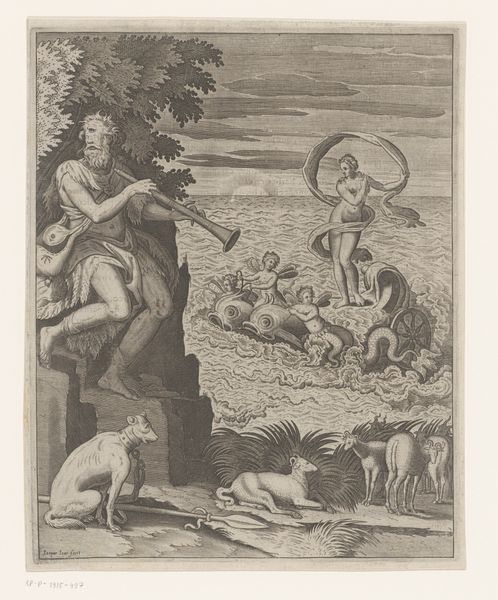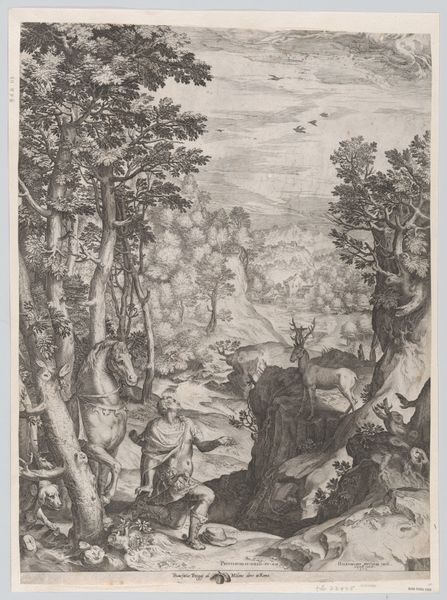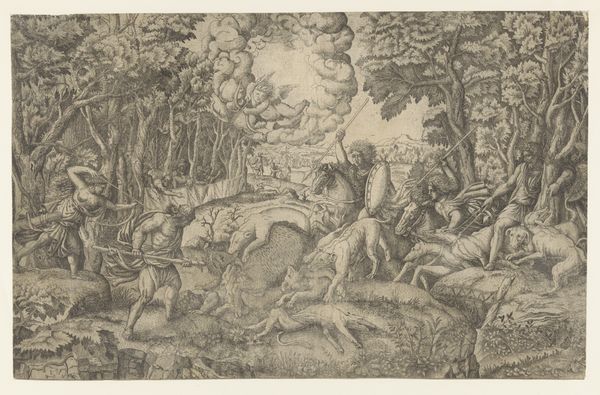
drawing, print, engraving
#
drawing
#
medieval
#
allegory
#
narrative-art
#
baroque
# print
#
landscape
#
figuration
#
line
#
engraving
Dimensions: height 523 mm, width 408 mm
Copyright: Rijks Museum: Open Domain
Editor: Here we have Nicolaes de Bruyn’s "Knight, Death and the Devil," an engraving from 1618 currently residing at the Rijksmuseum. The stark contrast and the densely packed imagery give it a rather ominous feeling, don't you think? What stands out to you when you look at this piece? Curator: It is indeed a powerful piece, steeped in the socio-political anxieties of its time. While on the surface it’s a Baroque allegory, its impact lies in its potent iconography circulated via print. Consider the "knight errant" figure, a popular symbol in Early Modern Europe, representing moral fortitude. How do we contextualize his journey alongside Death and the Devil in the shadow of the Thirty Years' War? Editor: So, you're suggesting that beyond the surface-level narrative, there's a commentary on the fragility of morality amidst the widespread conflict of the era? The knight seems resolute, yet vulnerable in this dangerous landscape. Curator: Precisely. The engraving cleverly appropriates medieval morality plays for a new public through the reproducible medium of print. The forest is not merely a backdrop; it becomes a stage where moral battles play out, readily disseminated and debated. Notice the meticulous detail and line work, hallmarks of de Bruyn's training, enhancing the dramatic effect and lending a visual intensity. This creates an immediacy, drawing the viewer into the knight’s perilous quest. Do you see how the distribution affects its meaning? Editor: Yes, it’s interesting to consider how something designed for mass distribution changes the interpretation. I initially saw it as a personal struggle, but its circulation turns it into a larger statement about the societal challenges of the time. I never thought about the implications of "print" being part of the message. Curator: And it underscores the political role imagery played! By examining its distribution and reception, we gain insight into the artist’s dialogue with his audience and the sociopolitical discourse he was participating in. Editor: That is truly fascinating. I'll definitely look at art with a broader historical and societal lens going forward! Curator: Indeed, analyzing art's cultural journey often reveals its profound, enduring relevance.
Comments
No comments
Be the first to comment and join the conversation on the ultimate creative platform.
